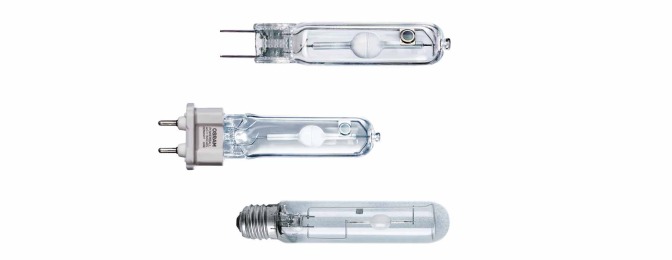MH lamp is turned on, tungsten sputters from the electrodes. Over the lamp life, this tungsten can cause the arc tube wall to blacken, thus reducing performance of the lamp.
More efficient pulse start metal halide ballasts have largely replaced traditional probe start metal halide ballasts. This new generation of HID ballasts include all metal halide ballasts 150 watts and below as well as most current generation higher-wattage ballasts. Pulse start ballasts use higher starting voltages to power lamps, resulting in higher mean lumen ratings and faster restrike times.
Many lighting applications, including factories, warehouses, manufacturing facilities, and gymnasiums, will use a standard magnetic core and coil ballast.
The high heat tolerance and wide array of voltages and configurations make core and coil the most popular of pulse start ballasts. To aid in installation and reduce labor costs, almost all of core and coil ballasts we carry include pre-wired capacitors and ignitors.
Metal Halide lamps are electrically similar to mercury designs except that they require a higher starting voltage from the ballast. In order to provide this, the ballast has to have larger magnetic components, which have the effect of
adding cost to the system and using more energy. An important element in the design of the arc tube is the fill pressure. Increasing the fill pressure results in better electrode performance, improved lumen maintenance and longer life but on the negative side, it makes starting the arc more difficult using a traditional magnetic ballast. Therefore, the
designer has to make compromises by limiting the fill pressure to be able to start the arc while still providing good lamp performance.
The Pulse-start MH lamps do not have the starting probe electrode. Instead they have a high-voltage ignitor that works with the ballast to start the lamp using a series of high-voltage pulses (typically 3 to 5 kilovolts). Without the probe electrode, the amount of pinch (or seal) area at the end of the arc tube is reduced, which results in a reduced heat loss. Furthermore, using an ignitor with a lamp reduces the tungsten sputtering by heating up the electrodes faster during starting. Warm-up time is also reduced. Pulse-start technology was developed to increase lamp life and to have both the energy efficacies of high-pressure sodium (HPS) lamps and the desirable color characteristics of MH lamps.
Metal Halide Ballasts | High Pressure Sodium Ballasts | Fluorescent ballasts | Gear Tray
Links: Porcelain lamp socket | Mercury Vapor Ballast | Light bulb socket
Xml Copyright: @2012-2020 James Lighting Electronic Co.,Ltd